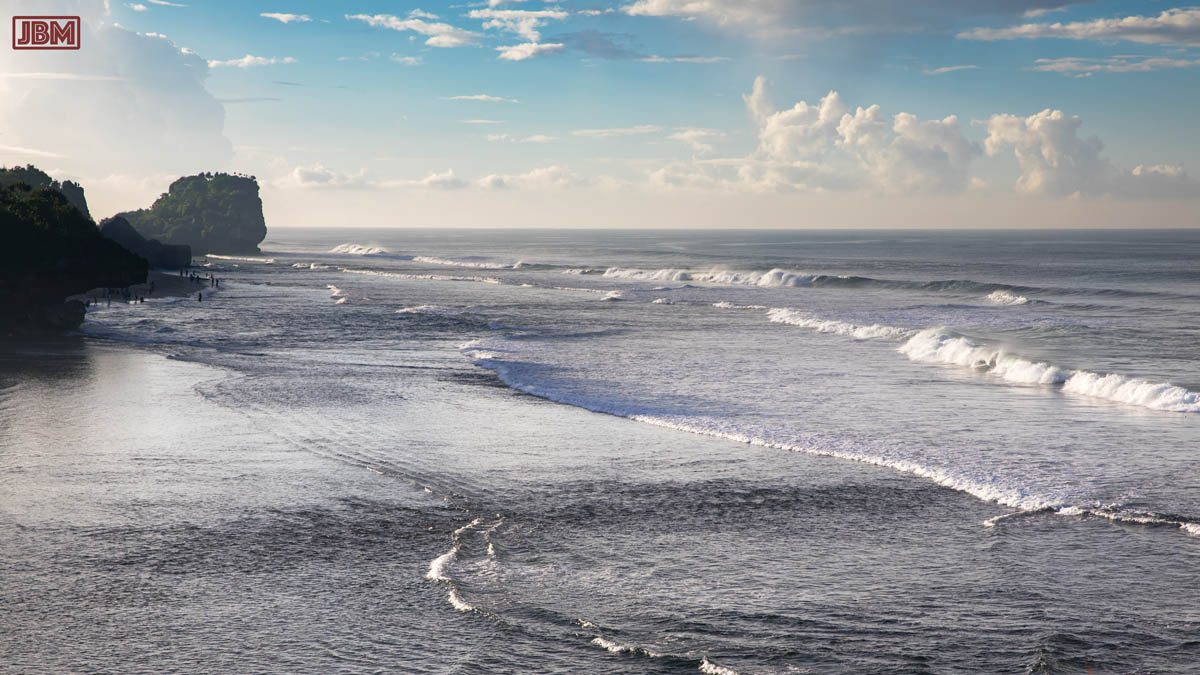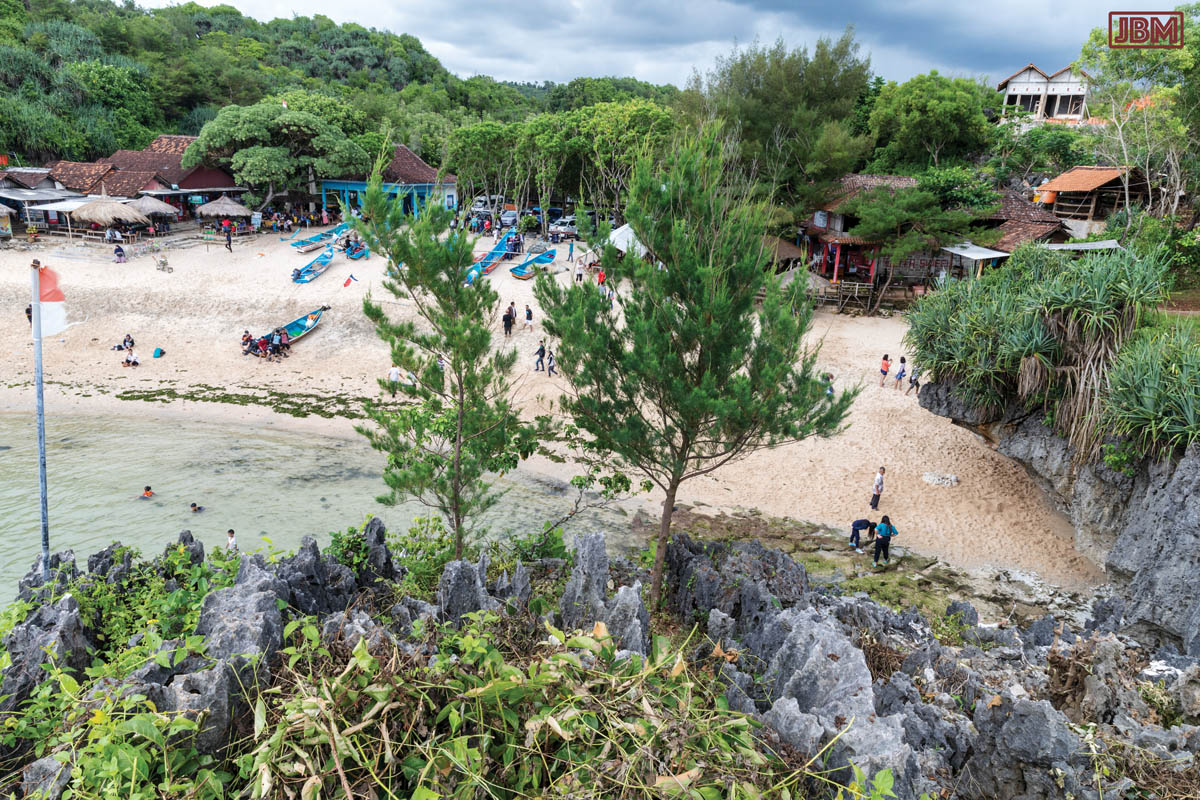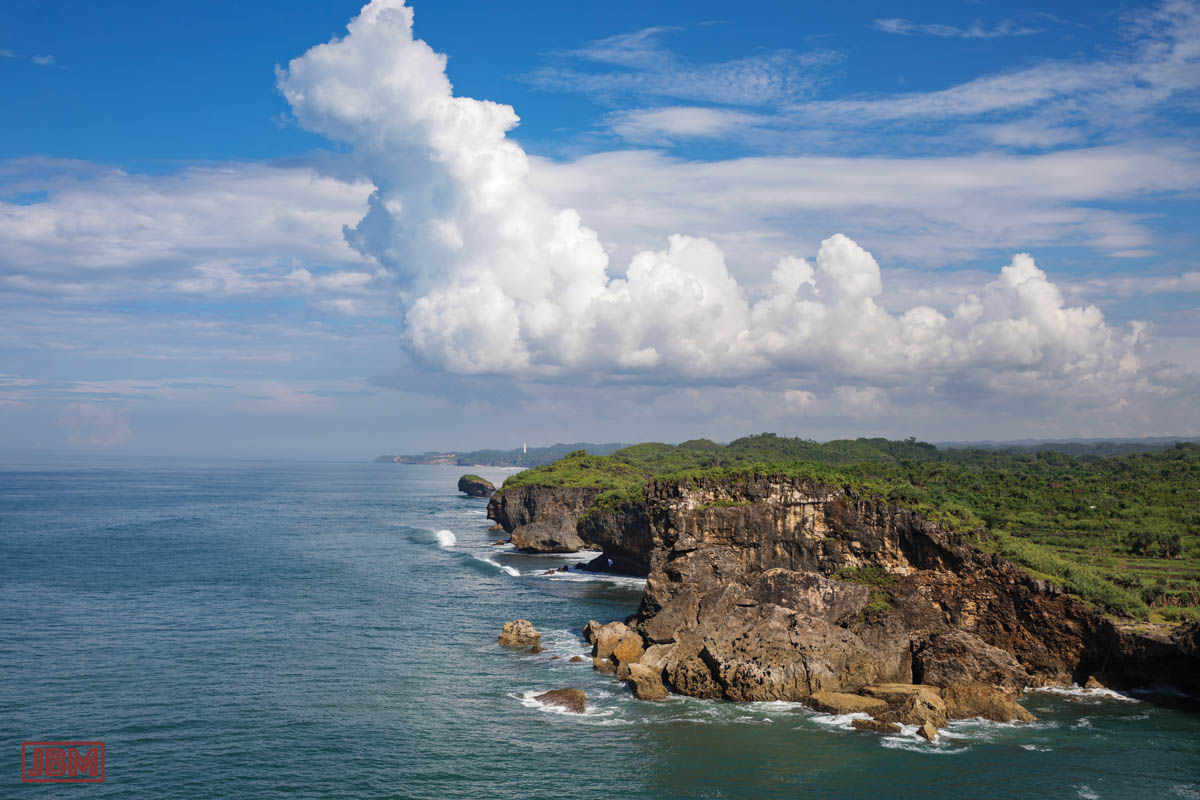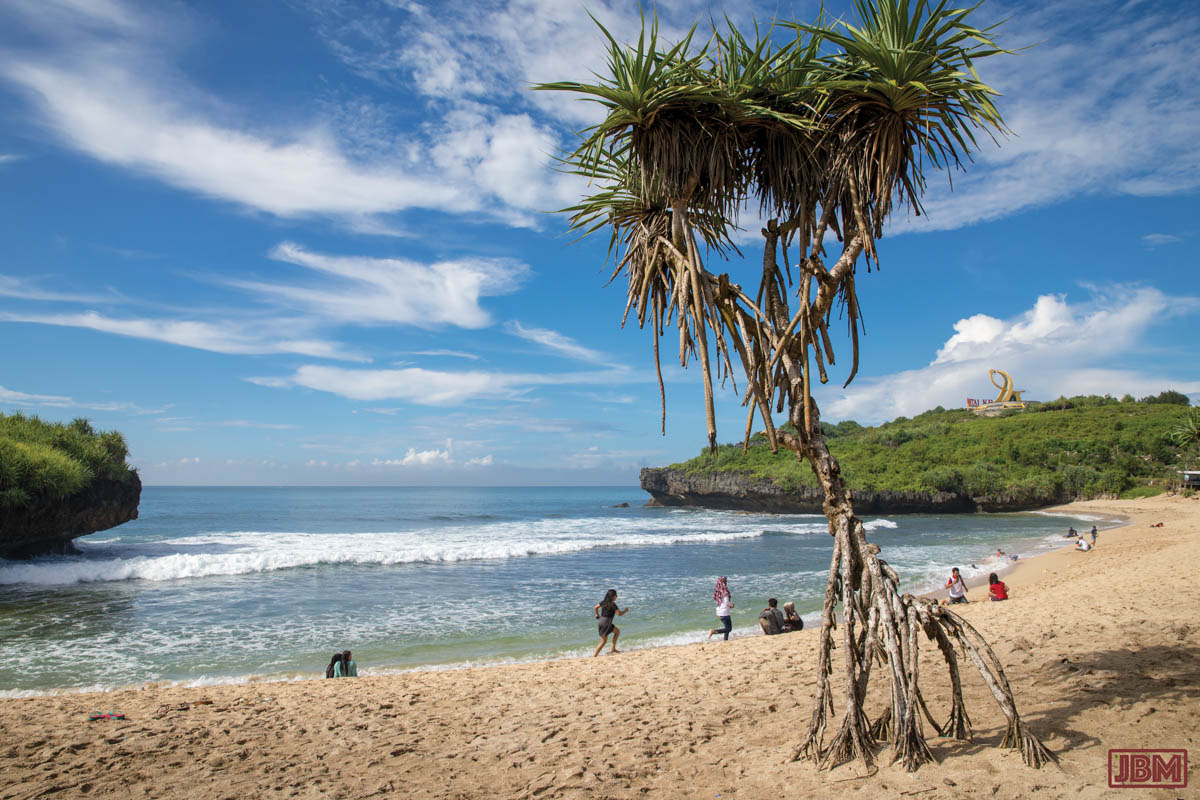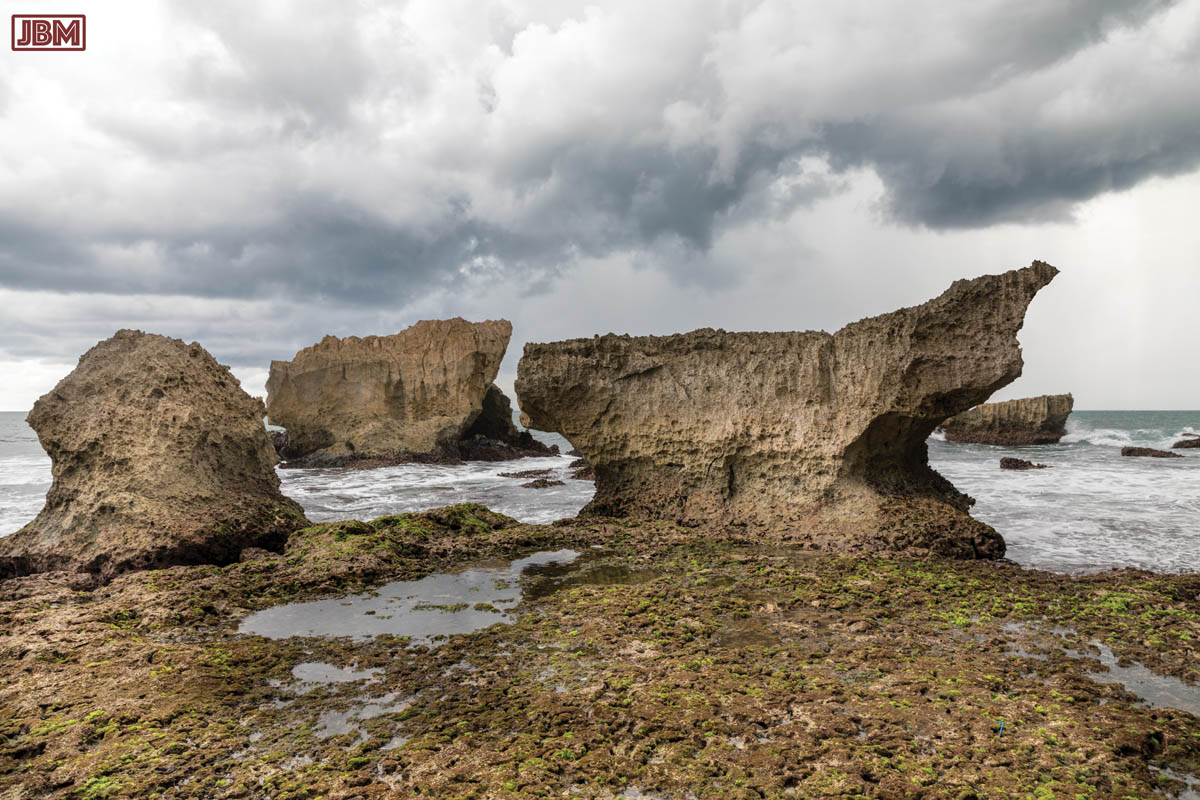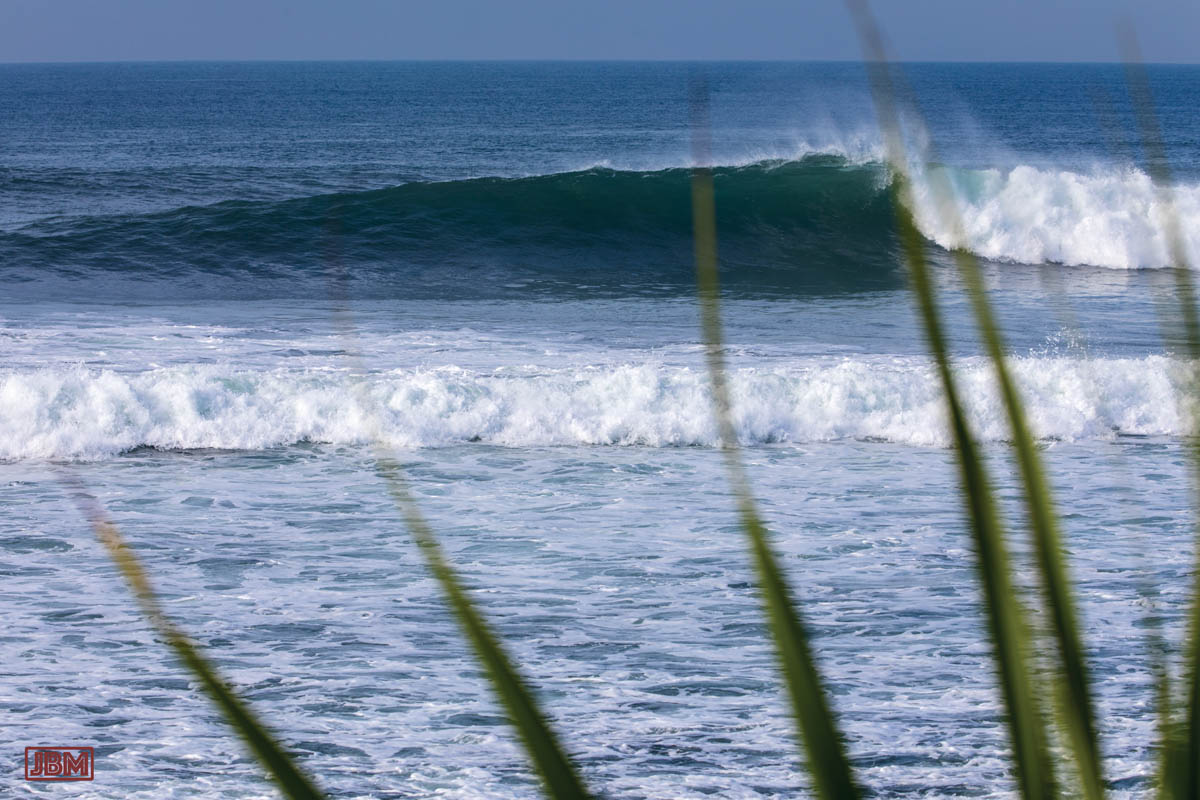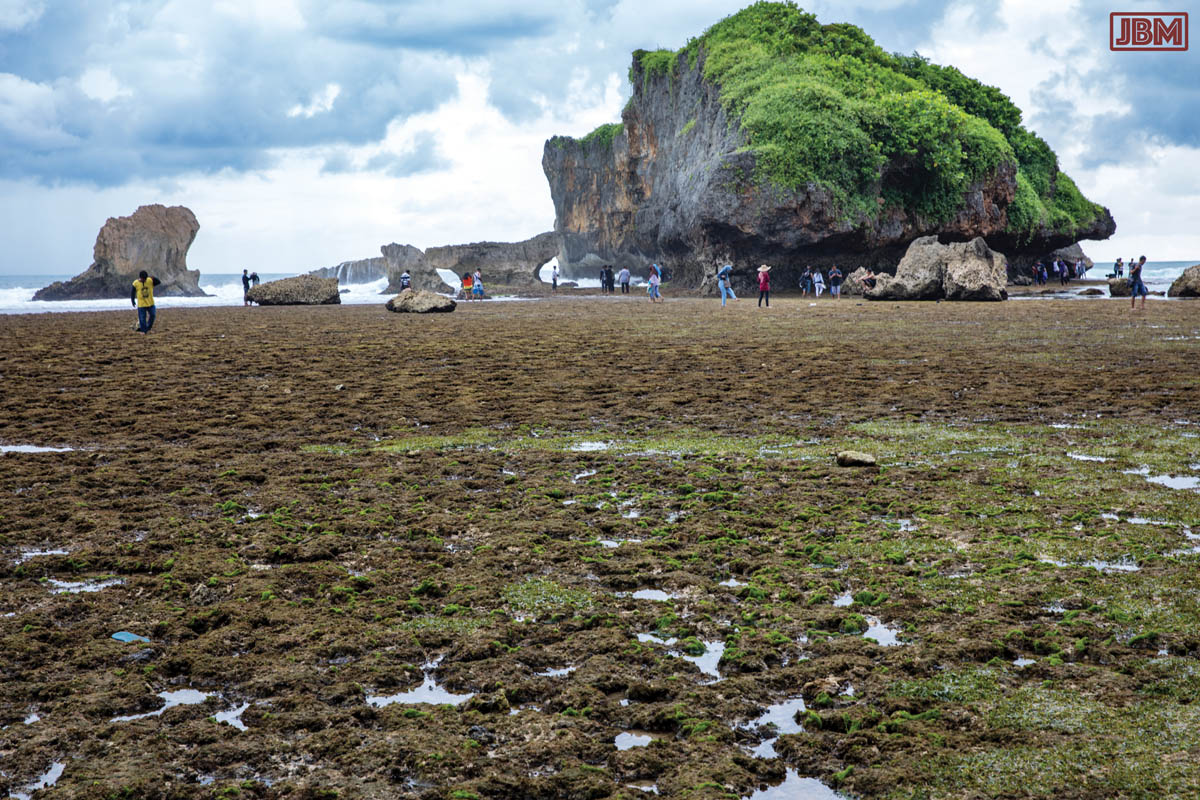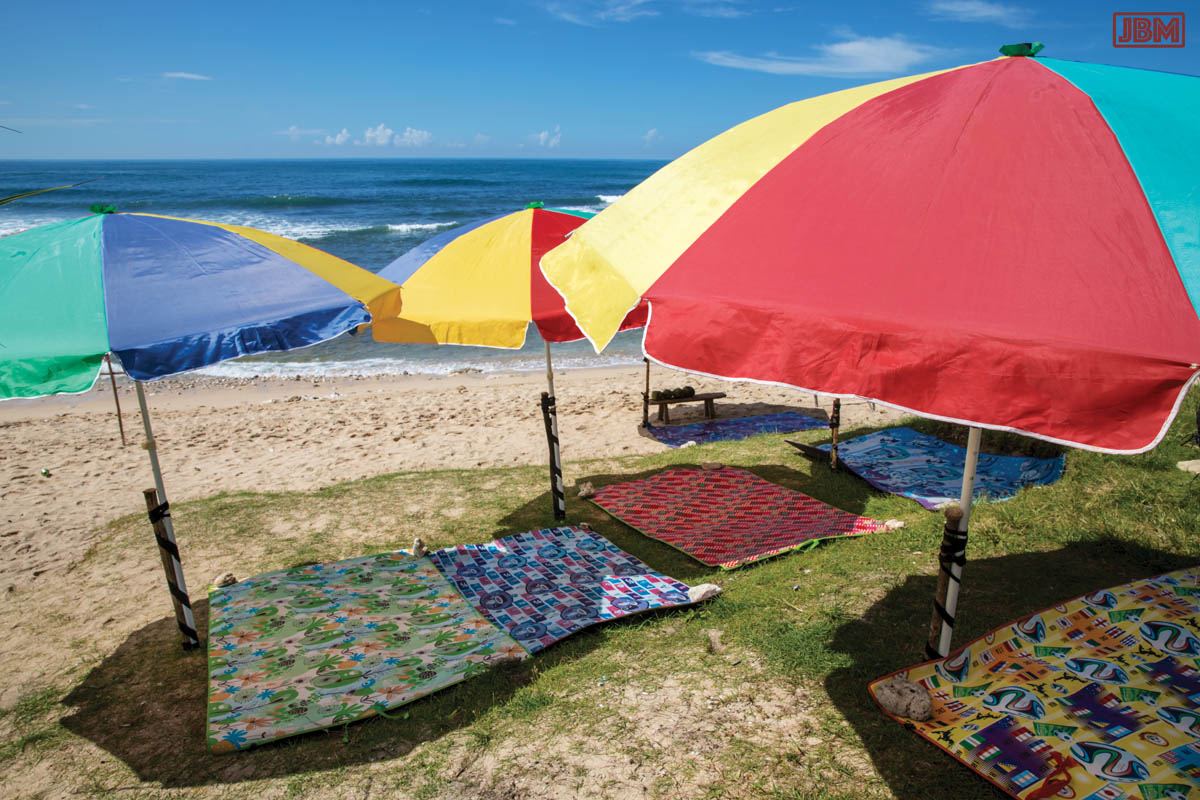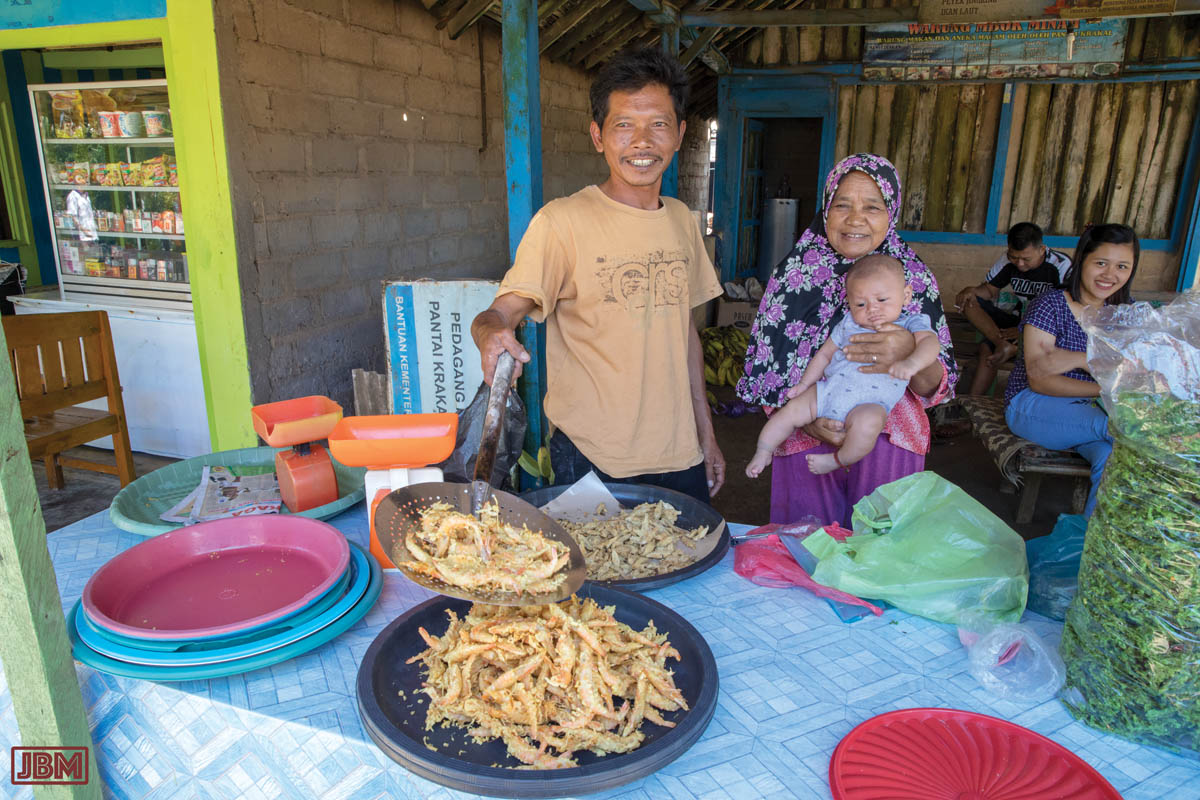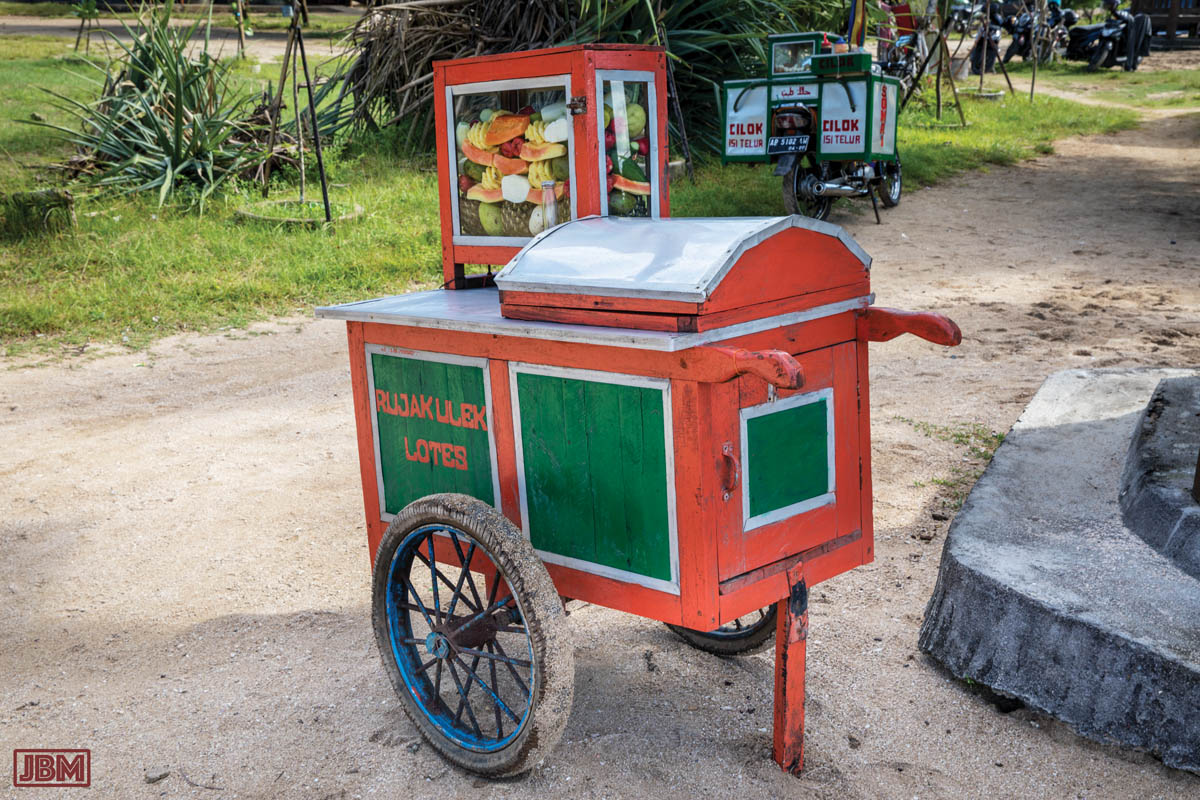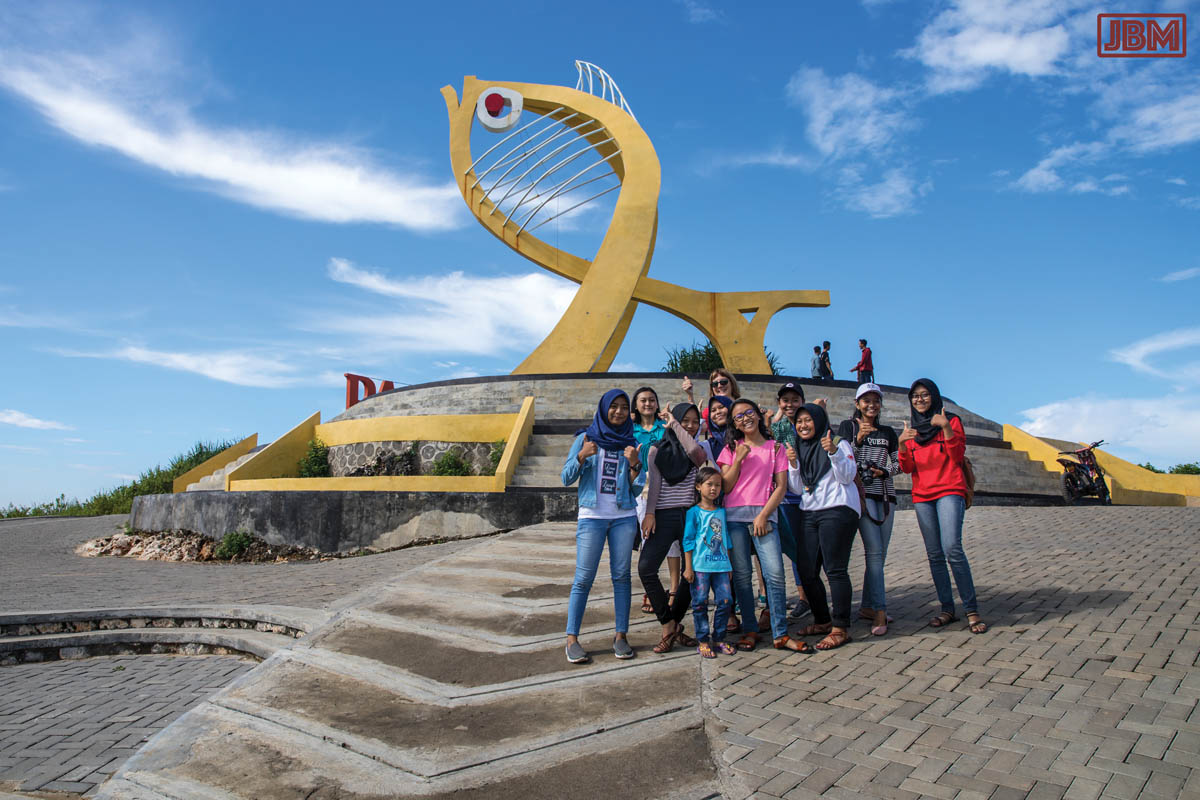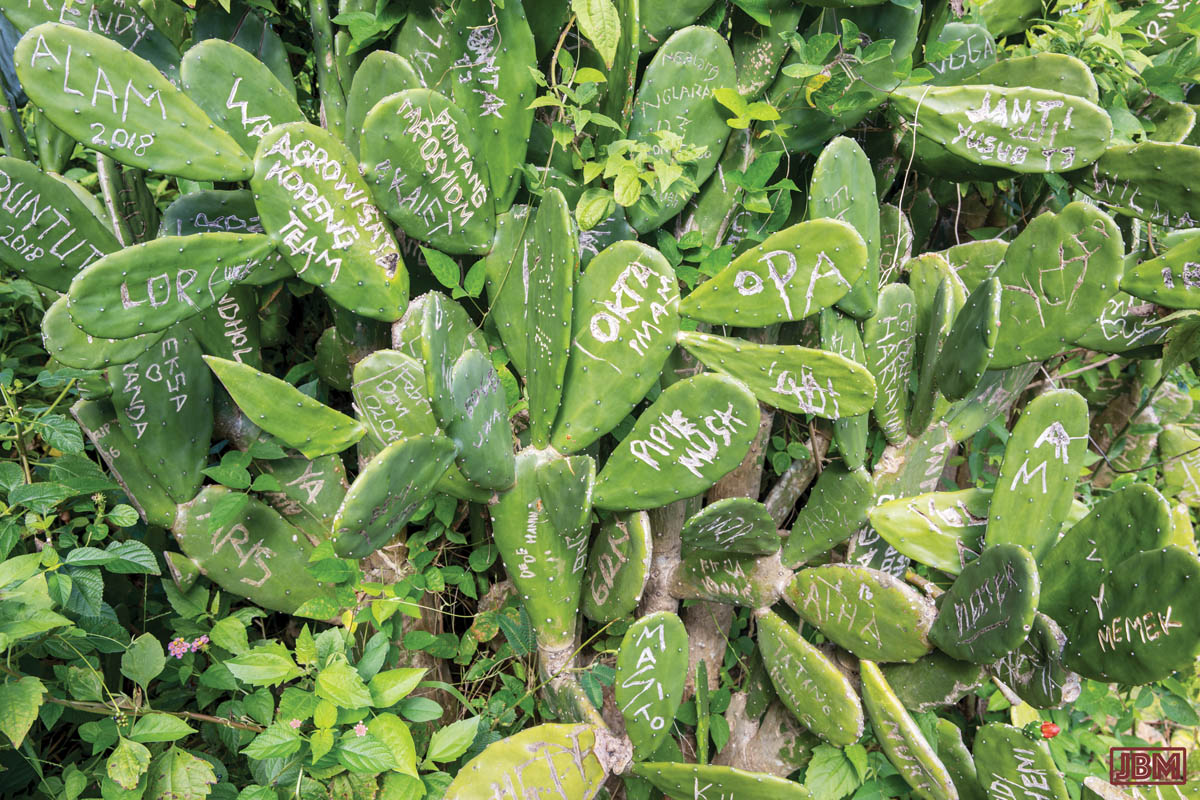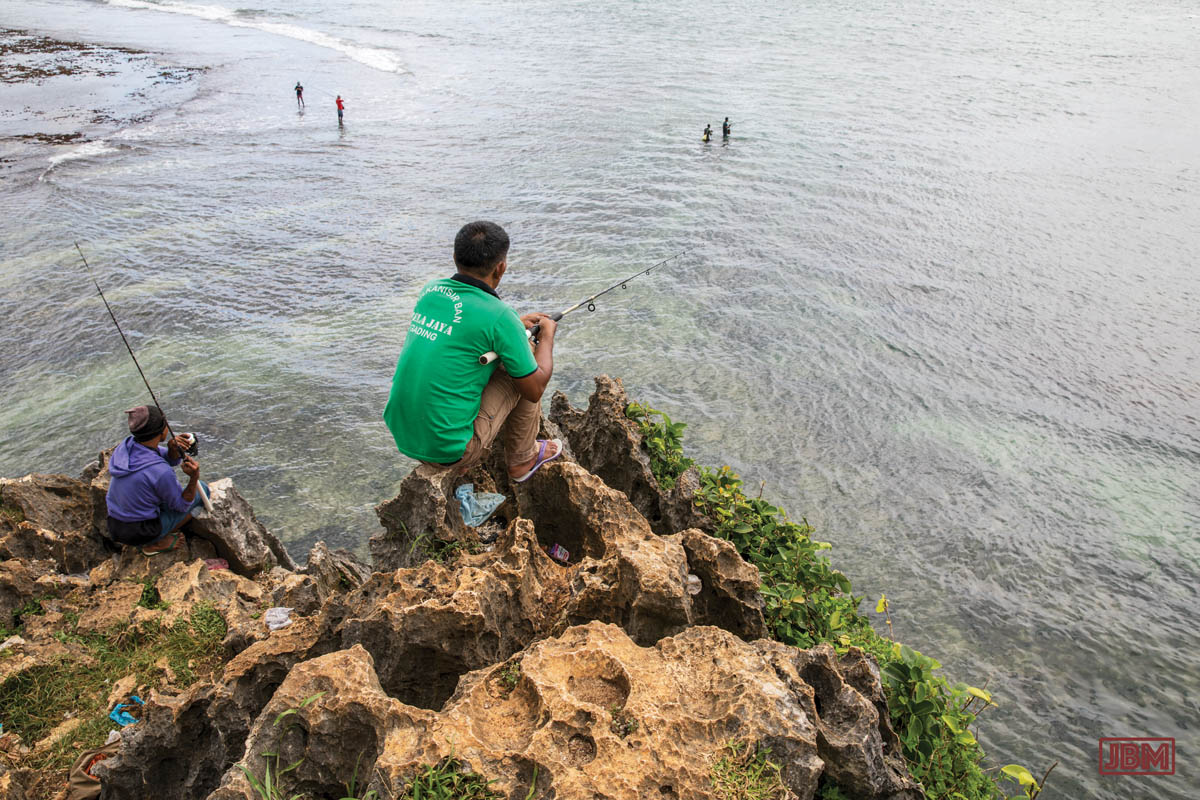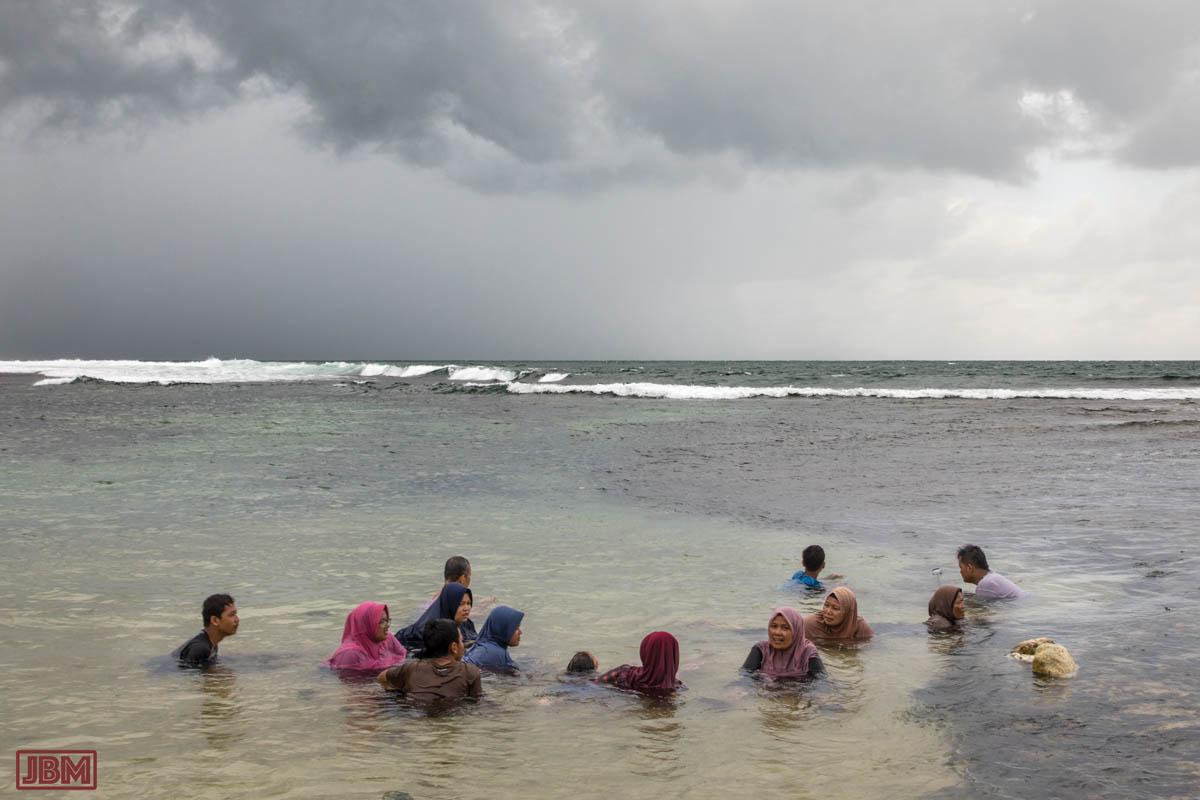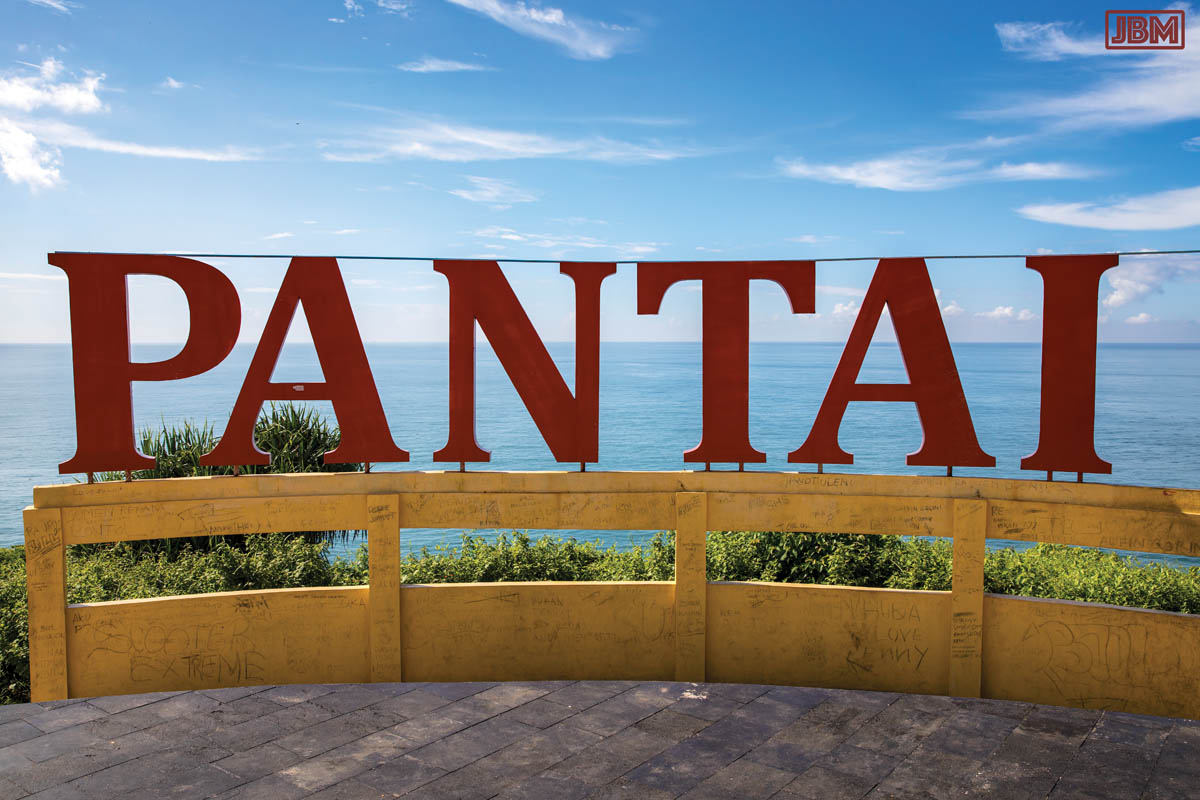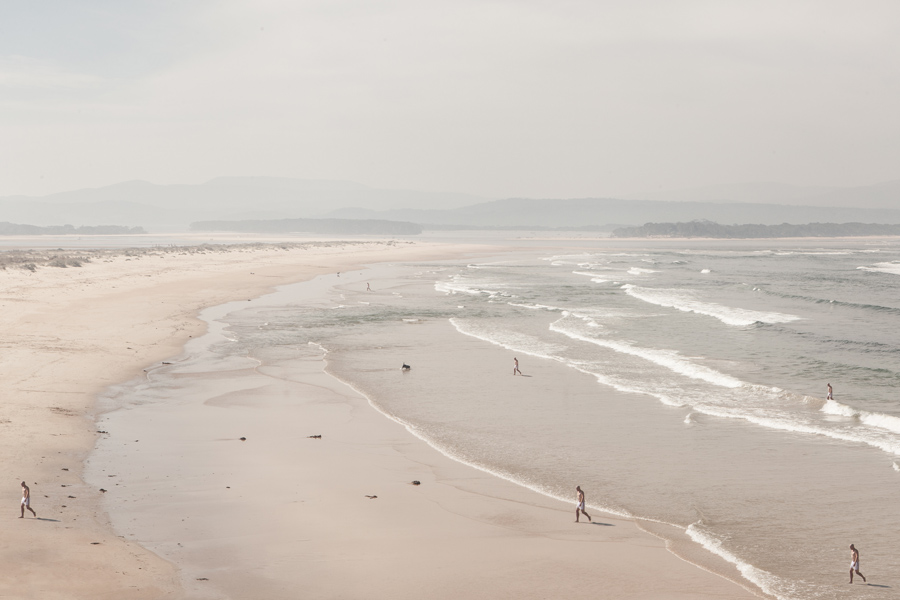The little seaside village at Pantai Ngandong sits snugly in the limestone karst landscape of Central Java. It’s actually located within the ‘Daerah Istimewa Yogyakarta’ (the Special Region of Yogyakarta), but it’s over two hours’ drive southeast from the city itself.
Like the many other beach settlements along this stretch of coast, the economy is now largely based on domestic tourism, drawing visitors from Central Java and further afield to enjoy the marvellous scenery, swimming and fishing, seafood, white sandy beaches and the caves of the hinterland.
The coastal scenery, with the limestone cliffs being (relatively) rapidly eroded, is really quite spectacular. And the water is clean and blue.
Even for an Australian visitor, no stranger to scenic shorelines, the golden sand beach is lovely and inviting.
With some very sculptural formations in the limestone.
And, offshore on the reef, there is a rather nice right-hand surf break – but with no-one out there to ride it.
At low tide, the rock platform adjoining Pulau Watulawang encourages beach-combing. The little rock pools are home to an array of pretty, weird and/or dangerous-looking sea-life.
Visiting tourists can recline on mats under brightly coloured beach umbrellas – once they’ve paid to rent the space.
The beachside road is lined with warungs, snorkelling hire outlets and gift shops. Not surprisingly, there’s lots of seafood to be had – such as these lightly battered and deep fried prawns (udang goreng). They were delicious – as were the crispy fried seaweed (rumput laut) snacks in the bag at the right of the picture below.
For more snacks, there are kaki lima vendors up and down the road. Fruit salad in front (with pineapple, papaya, melon, dragonfruit and banana), and cilok (balls of tapioca and egg, served with peanut sauce) behind.
There is of course no shortage of suitable locations for selfies and group photos! Can you spot the bule?
And no shortage of places to leave your name as a record of your visit – including some novel locations.
Plenty of picturesque (if somewhat dangerous) spots for rock or beach fishing.
An abundance of swimming holes to cool off in. Very modest (some might say impractical) swimming attire – even worn when snorkelling.

